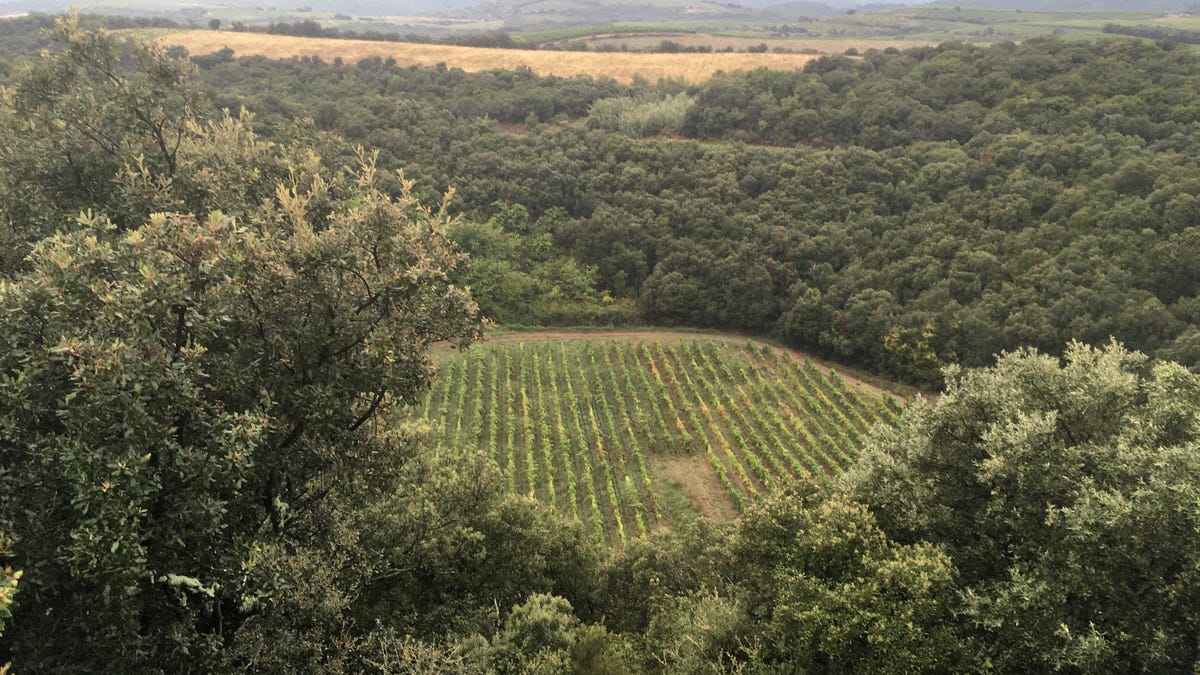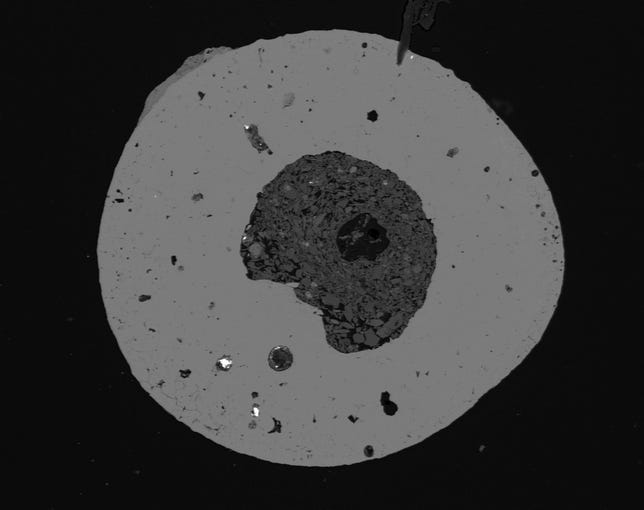
Researchers say this crater was made by a meteorite.
Frank Brenker, Goethe University Frankfurt
The Domaine du Meteore winery in southern France got its name from a dramatic depression in the ground where it grows grape vines. Turns out the name is more than a marketing ploy. Geologist and cosmochemist Frank Brenker from Goethe University Frankfurt says it’s proved to be true.
Decades ago, geologists had a disagreement about how the 720-foot-wide (220 meters) and 100-foot-deep (30 meters) depression was formed. Some thought it might be from a meteorite impact. But others said no, thanks in part to the depression’s lack of a raised rim around its edge, and everyone just went with that. Until now.

 Enlarge Image
Enlarge Image
According to Goethe University, the iron oxide spherule found in the Domaine du Meteore crater has a core composed of minerals typical for the crater environment and also contains a large number of microdiamonds.
Frank Brenker, Goethe University Frankfurt
“Craters can form in many ways, and meteorite craters are indeed very rare,” Brenker said in a Goethe University statement on Wednesday. “However, I found the various other interpretations of how this depression could have formed unconvincing from a geological perspective.”
Brenker took a careful look at the depression and set about trying to find signs of a long-ago meteorite impact. It can be hard to spot a meteorite crater. Over time, erosion and other geologic processes cover up the evidence. Brenker’s paper on the French winery crater (PDF link) notes that small impact craters (under 1,000 feet/300 meters in diameter) are very rare and that it’s challenging to prove their extraterrestrial origins.
See also
- Scientists Find 17-Pound Meteorite in Antarctica: One Hefty Space Rock
- NASA Spots Mars Rock That’s Not Like the Others
An analysis turned up evidence of cemented-together rocks called breccia that can be associated with meteorite impacts. Brenker, geophysicist Andreas Junge and a team of students took a field trip to get a closer look. They measured a weakened magnetic field at the site. “This is typical for impact craters because the impact shatters or even melts the rock, which can thus contribute less to Earth’s magnetic field,” the university said.
The team used a powerful magnet to pull up small spherules of iron oxide, another key ingredient found in other meteorite-caused impact craters. A combination of geologic and mineralogical evidence points to a space rock as the culprit behind the depression.
Domaine du Meteore has embraced its otherworldly origin story. The vineyard proudly proclaims, “These are wines from another dimension.”
